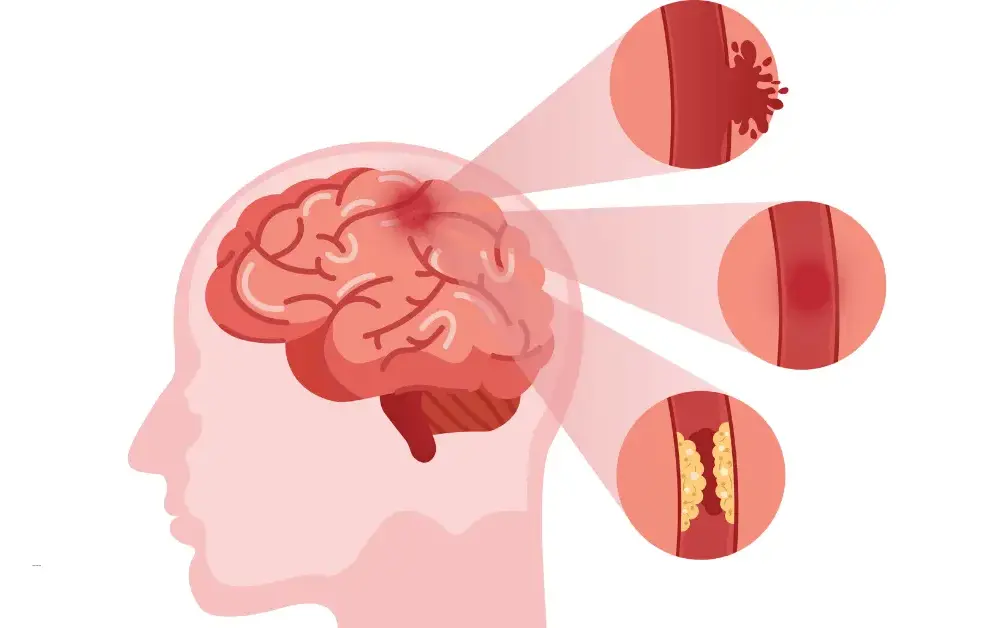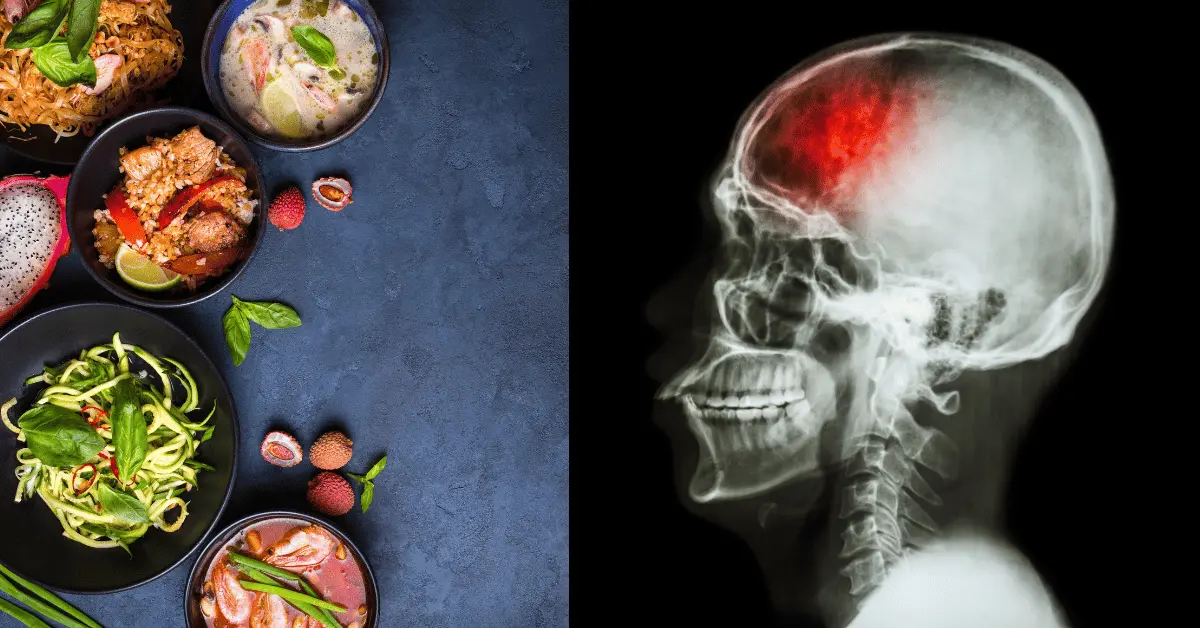Contents
- 1 Introduction
- 2 Understanding Stroke: A Brief Overview
- 3 Foods That Reduce Stroke Risk
- 3.1 Leafy Greens: The Power of Kale and Spinach
- 3.2 Berries: Antioxidant-Rich Superfoods
- 3.3 Nuts and Seeds: Heart-Healthy Fats
- 3.4 Fatty Fish: Omega-3 Powerhouses
- 3.5 Whole Grains: Fiber and Nutrient-Rich Options
- 3.6 Legumes: Plant-Based Protein Sources
- 3.7 Citrus Fruits: Vitamin C and Beyond
- 3.8 Tomatoes: Lycopene and Heart Health
- 3.9 Avocados: The Creamy Heart-Helper
- 3.10 Dark Chocolate: A Sweet Treat for Your Heart
- 3.11 Olive Oil: Mediterranean Diet Staple
- 3.12 Green Tea: Antioxidant and Anti-Inflammatory Benefits
- 3.13 Garlic: A Flavorful Health Booster
- 4 Lifestyle and Dietary Tips for Reducing Stroke Risk
- 5 Conclusion
- 6 Must Read
- 7 Frequently asked questions (faqs)
- 7.1 1. What types of foods can help reduce the risk of stroke?
- 7.2 2. How do leafy greens like kale and spinach help in stroke prevention?
- 7.3 3. Why are berries considered beneficial for reducing stroke risk?
- 7.4 4. What role do omega-3 fatty acids in fatty fish play in preventing strokes?
- 7.5 5. Can whole grains help lower the risk of stroke?
- 7.6 6. What are some simple ways to add more legumes to my diet?
- 7.7 7. How does staying hydrated support stroke prevention?
- 7.8 8. What are effective ways to manage stress to reduce stroke risk?
- 7.9 9. Why is it important to limit sodium intake for stroke prevention?
Introduction
Imagine slashing your risk of stroke simply by making smarter choices at the grocery store. As staggering as it sounds, the foods you eat can play a pivotal role in protecting your brain and heart. I’m Anas, a healthcare educator with over two decades of experience, and today, I’m diving deep into how your diet can be your most powerful ally in stroke prevention.
Understanding Stroke: A Brief Overview
Strokes are one of the leading causes of disability and death worldwide, and understanding their nature is the first step in preventing them. A stroke occurs when the blood supply to part of your brain is interrupted or reduced, depriving brain tissue of oxygen and nutrients. Within minutes, brain cells begin to die. There are two main types of stroke:

- Ischemic Stroke: The most common type, occurring when a blood clot blocks or narrows an artery leading to the brain.
- Hemorrhagic Stroke: Occurs when a blood vessel in the brain bursts, leading to bleeding within or around the brain.
Global Statistics and Prevalence in 2024
As of 2024, stroke remains a significant global health issue. The World Health Organization (WHO) reports that approximately 15 million people suffer a stroke each year. Of these, 5 million die, and another 5 million are left permanently disabled, placing a heavy burden on families and healthcare systems. The prevalence of stroke continues to rise due to aging populations and increasing rates of risk factors such as hypertension, diabetes, and obesity.
The Importance of Diet in Stroke Prevention

The good news is that many strokes can be prevented, and diet plays a crucial role. Nutrient-rich foods can help lower blood pressure, reduce cholesterol levels, and improve overall cardiovascular health, which are key factors in reducing stroke risk. By making informed dietary choices, you can significantly lower your chances of experiencing a stroke.
In this blog post, we’ll explore the specific foods that can help reduce your risk of stroke and how to incorporate them into your daily meals. Let’s embark on this journey towards better health and a stroke-free future.
Foods That Reduce Stroke Risk
Leafy Greens: The Power of Kale and Spinach
Nutritional Profile and Health Benefits
Kale and spinach are packed with essential vitamins and minerals. Kale is rich in vitamins A, C, and K, as well as antioxidants like quercetin and kaempferol. Spinach provides iron, calcium, magnesium, and folate. These nutrients help reduce inflammation, improve blood circulation, and lower blood pressure, all of which contribute to reducing stroke risk.
Recipes to Incorporate More Leafy Greens into Your Diet
- Kale Smoothie: Blend kale, banana, Greek yogurt, and almond milk for a nutritious start to your day.
- Spinach Salad: Combine fresh spinach, strawberries, walnuts, and feta cheese, then drizzle with balsamic vinaigrette.
- Sautéed Kale and Garlic: Sauté kale with olive oil and garlic for a simple and delicious side dish.
Berries: Antioxidant-Rich Superfoods
Types of Berries: Blueberries, Strawberries, and More
Blueberries, strawberries, raspberries, and blackberries are rich in antioxidants like anthocyanins, which give them their vibrant colors. These antioxidants help combat oxidative stress, a major factor in the development of stroke.
How Berries Combat Oxidative Stress and Inflammation
Berries reduce inflammation by neutralizing free radicals in the body, which can damage cells and lead to chronic diseases. Consuming berries regularly can improve endothelial function and lower blood pressure, both of which are crucial for stroke prevention.
Nuts and Seeds: Heart-Healthy Fats
Benefits of Almonds, Walnuts, Flaxseeds, and Chia Seeds
Nuts and seeds are excellent sources of heart-healthy fats, fiber, and protein. Almonds and walnuts provide omega-3 fatty acids and vitamin E, which support heart health. Flaxseeds and chia seeds are rich in alpha-linolenic acid (ALA), a type of omega-3 that helps reduce inflammation.
Daily Serving Recommendations and Snack Ideas
- Serving Size: Aim for a handful (about 1 ounce) of nuts or seeds daily.
- Snack Ideas: Add nuts to yogurt, sprinkle flaxseeds on oatmeal, or enjoy chia seed pudding.
Fatty Fish: Omega-3 Powerhouses
Best Choices: Salmon, Mackerel, Sardines
Salmon, mackerel, and sardines are among the best sources of omega-3 fatty acids. These fish provide EPA and DHA, which have been shown to reduce blood clotting and inflammation, lower triglycerides, and improve overall heart health.
Role of Omega-3 Fatty Acids in Reducing Stroke Risk
Omega-3 fatty acids help maintain the health of blood vessels, reduce arterial plaque, and prevent arrhythmias. Regular consumption of fatty fish is linked to a lower risk of ischemic stroke.
Whole Grains: Fiber and Nutrient-Rich Options
Examples: Oats, Quinoa, Brown Rice
Whole grains are rich in fiber, vitamins, and minerals. Oats, quinoa, and brown rice provide complex carbohydrates, which help regulate blood sugar levels and reduce cholesterol.
How Whole Grains Support Cardiovascular Health
The fiber in whole grains helps lower LDL cholesterol and improve digestion. Whole grains also have a low glycemic index, preventing spikes in blood sugar levels and reducing the risk of stroke.
Legumes: Plant-Based Protein Sources
Benefits of Beans, Lentils, and Chickpeas
Legumes are excellent sources of plant-based protein, fiber, and essential nutrients like potassium and magnesium. Beans, lentils, and chickpeas help improve heart health by lowering cholesterol levels and maintaining healthy blood pressure.
Simple Ways to Add Legumes to Your Meals
- Salads: Add chickpeas to salads for extra protein.
- Soups: Use lentils in soups and stews.
- Snacks: Enjoy hummus made from chickpeas as a healthy dip.
Citrus Fruits: Vitamin C and Beyond
Nutritional Benefits of Oranges, Grapefruits, Lemons
Citrus fruits are rich in vitamin C, flavonoids, and fiber. These nutrients support immune function, reduce inflammation, and improve vascular health.
Impact on Blood Pressure and Arterial Health
Vitamin C helps strengthen blood vessels, and the potassium in citrus fruits aids in maintaining healthy blood pressure. Regular consumption of citrus fruits is associated with improved endothelial function and reduced stroke risk.
Tomatoes: Lycopene and Heart Health
The Role of Lycopene in Stroke Prevention
Lycopene, a powerful antioxidant found in tomatoes, helps reduce oxidative stress and inflammation. It also improves lipid profiles and lowers blood pressure, contributing to stroke prevention.
Cooking Tips to Maximize Lycopene Absorption
Cooking tomatoes enhances lycopene absorption. Use tomatoes in sauces, soups, and stews to get the most benefit. Pairing tomatoes with healthy fats, like olive oil, further increases lycopene absorption.
Avocados: The Creamy Heart-Helper
Monounsaturated Fats and Their Benefits
Avocados are rich in monounsaturated fats, which help reduce bad cholesterol (LDL) and increase good cholesterol (HDL). They also contain potassium and fiber, which support heart health.
Delicious Ways to Enjoy Avocados Daily
- Toast: Spread avocado on whole-grain toast.
- Salads: Add sliced avocado to salads.
- Smoothies: Blend avocado into smoothies for added creaminess and nutrition.
Dark Chocolate: A Sweet Treat for Your Heart
How Flavonoids Improve Blood Flow
Dark chocolate contains flavonoids, which help improve blood flow and lower blood pressure. These compounds also have anti-inflammatory and antioxidant effects.
Healthy Serving Sizes and Tips
Choose dark chocolate with at least 70% cocoa content. Limit intake to one small square (about 1 ounce) per day to enjoy its benefits without overindulging.
Olive Oil: Mediterranean Diet Staple
Health Benefits of Extra Virgin Olive Oil
Extra virgin olive oil is rich in monounsaturated fats and antioxidants, which help reduce inflammation and improve cardiovascular health. It’s a key component of the Mediterranean diet, which is linked to a lower risk of stroke.
Cooking and Dressing Ideas
Use olive oil in salad dressings, for sautéing vegetables, and drizzling over cooked dishes. Its versatility makes it easy to incorporate into your diet.
Green Tea: Antioxidant and Anti-Inflammatory Benefits
Key Compounds in Green Tea and Their Effects
Green tea contains catechins, which have antioxidant and anti-inflammatory properties. These compounds help protect blood vessels and improve overall cardiovascular health.
How Much to Drink for Optimal Benefits
Aim to drink 3-4 cups of green tea per day to reap its health benefits. Avoid adding sugar to keep it a healthy beverage choice.
Garlic: A Flavorful Health Booster
Allicin and Its Cardiovascular Benefits
Garlic contains allicin, which helps lower blood pressure, reduce cholesterol levels, and improve blood flow. These effects contribute to a reduced risk of stroke.
Easy Ways to Add Garlic to Your Diet
- Cooking: Add minced garlic to sautés, soups, and sauces.
- Raw: Incorporate raw garlic into salad dressings and dips.
- Roasted: Enjoy roasted garlic as a spread on whole-grain bread.
By incorporating these foods into your diet, you can significantly reduce your risk of stroke and improve your overall health. Making small, sustainable changes to your eating habits can lead to long-term benefits for your brain and heart.
Lifestyle and Dietary Tips for Reducing Stroke Risk
Creating a Balanced Diet Plan
Importance of Variety and Moderation
A balanced diet includes a variety of foods from all food groups. Aim for a colorful plate with different fruits, vegetables, whole grains, and lean proteins. Moderation is key to preventing overeating and maintaining a healthy weight.
Sample Meal Plan Incorporating Stroke-Preventive Foods
Breakfast: Oatmeal topped with berries and a sprinkle of flaxseeds.
Lunch: Spinach salad with chickpeas, avocado, and a citrus vinaigrette.
Snack: A handful of walnuts and a cup of green tea.
Dinner: Grilled salmon with quinoa and sautéed kale with garlic.
Dessert: A small square of dark chocolate.
Importance of Hydration
Role of Water in Maintaining Vascular Health
Staying hydrated helps maintain blood volume and pressure. Water supports the function of every cell, including those in your brain and cardiovascular system.
Recommended Daily Water Intake
Aim for at least 8 cups (64 ounces) of water per day. Adjust your intake based on activity level, climate, and individual needs.
Regular Physical Activity
Exercise and Its Impact on Stroke Risk
Regular physical activity helps maintain a healthy weight, lower blood pressure, and improve cholesterol levels. Exercise also enhances overall cardiovascular health.
Simple Ways to Incorporate Exercise into Your Routine
- Walking: Aim for at least 30 minutes of brisk walking most days of the week.
- Strength Training: Include strength training exercises twice a week.
- Active Hobbies: Engage in activities you enjoy, such as dancing, swimming, or cycling.
Limiting Sodium and Processed Foods
Sodium’s Effect on Blood Pressure
High sodium intake can lead to elevated blood pressure, increasing the risk of stroke. Processed foods are often high in sodium, so it’s important to read labels and choose lower-sodium options.
Tips for Reducing Sodium in Your Diet
- Cook at Home: Prepare meals from scratch to control salt levels.
- Use Herbs and Spices: Flavor foods with herbs, spices, and lemon juice instead of salt.
- Choose Fresh Foods: Opt for fresh or frozen fruits and vegetables rather than canned or processed versions.
Managing Stress and Mental Health
Connection Between Stress and Stroke
Chronic stress can contribute to high blood pressure and other cardiovascular issues. Managing stress is crucial for maintaining heart health and reducing stroke risk.
Effective Stress Management Techniques
- Mindfulness and Meditation: Practice mindfulness or meditation to reduce stress and improve mental clarity.
- Exercise: Physical activity is a natural stress reliever.
- Hobbies and Socializing: Engage in activities you enjoy and spend time with loved ones to boost your mood and reduce stress.
By following these lifestyle and dietary tips, you can create a comprehensive plan to reduce your stroke risk and improve your overall health.
Conclusion
Recap of Key Points
We’ve explored a variety of foods and lifestyle habits that can help reduce the risk of stroke. From leafy greens and berries to fatty fish and whole grains, incorporating these nutrient-rich foods into your diet can make a significant difference. Additionally, maintaining a balanced diet, staying hydrated, exercising regularly, limiting sodium, and managing stress are all essential steps in stroke prevention.
Encouragement for Making Dietary Changes
Remember, every small change counts. Start by incorporating one or two of the recommended foods into your meals each week. Over time, these healthy choices will become habits that contribute to your overall well-being.
Final Thoughts on Long-Term Health and Wellness
Your journey to better health and reduced stroke risk begins with the choices you make today. By prioritizing a healthy diet and lifestyle, you’re investing in a future of improved health and vitality. Let’s take these steps together towards a stroke-free life.
Must Read
- 13 Foods That Promote Mental Clarity in 2024
- The Power of Self-Compassion: Learning to Love Yourself in 2024
- How to Practice Mindfulness Anywhere in 2024
- Coping with Stress: Practical Tips for Daily Life in 2024
- Overcoming Panic Attacks: Strategies That Work
- Understanding Depression: Causes, Symptoms, and Treatments in 2024
- 7 Effective Ways to Boost Your Mood Instantly
- The Ultimate Guide to Managing Anxiety Naturally in 2024
- How to Reduce Mental Stress at Home in 2024: A Comprehensive Guide
- 10 Essential Facts about Body Dysmorphic Disorder in 2024
- Breaking the Stigma: Mental Health Awareness in 2024
- birds flu: who gets it, how can it spread, and how can we avoid it?
- Building Resilience: How to Bounce Back from Adversity in 2024
- Strategies for Better Sleep: Improving Your Sleep Hygiene in 2024
- Coping with Grief and Loss: Finding Solace in 2024
- Coping Strategies for Managing Anger in 2024
- 10 Surprising Health Benefits of Everyday Foods
- The Truth About Carbohydrates: Myths vs. Facts in 2024
- The Ultimate Guide to Natural Remedies for Common Ailments
- Effective Communication Skills: Enhancing Relationships
- The Art of Relaxation: Unwinding After a Busy Day
Frequently asked questions (faqs)
1. What types of foods can help reduce the risk of stroke?
Foods rich in antioxidants, healthy fats, fiber, and essential nutrients can help reduce stroke risk. These include leafy greens, berries, nuts and seeds, fatty fish, whole grains, legumes, citrus fruits, tomatoes, and avocados.
2. How do leafy greens like kale and spinach help in stroke prevention?
Leafy greens are high in vitamins A, C, and K, as well as antioxidants and minerals that help reduce inflammation, improve blood circulation, and lower blood pressure, all of which contribute to reducing the risk of stroke.
3. Why are berries considered beneficial for reducing stroke risk?
Berries are rich in antioxidants like anthocyanins, which combat oxidative stress and inflammation. These antioxidants help protect blood vessels and improve endothelial function, lowering the risk of stroke.
4. What role do omega-3 fatty acids in fatty fish play in preventing strokes?
Omega-3 fatty acids found in fatty fish like salmon, mackerel, and sardines help reduce blood clotting, decrease inflammation, lower triglycerides, and improve overall heart health, all of which are crucial for reducing stroke risk.
5. Can whole grains help lower the risk of stroke?
Whole grains, such as oats, quinoa, and brown rice, are high in fiber, which helps regulate blood sugar levels and reduce cholesterol. The fiber also supports healthy digestion and can prevent spikes in blood pressure, reducing stroke risk.
6. What are some simple ways to add more legumes to my diet?
You can add legumes to your diet by incorporating them into salads, soups, and stews. For example, add chickpeas to salads, use lentils in soups, and enjoy hummus made from chickpeas as a healthy snack.
7. How does staying hydrated support stroke prevention?
Proper hydration helps maintain blood volume and pressure, supports cardiovascular health, and ensures efficient nutrient delivery and waste removal. Dehydration can increase blood viscosity and pressure, raising the risk of stroke.
8. What are effective ways to manage stress to reduce stroke risk?
Effective stress management techniques include mindfulness and meditation, regular physical activity, engaging in hobbies, and spending time with loved ones. These activities help lower blood pressure and reduce the risk of cardiovascular issues linked to stress.
9. Why is it important to limit sodium intake for stroke prevention?
High sodium intake can lead to elevated blood pressure, a major risk factor for stroke. Reducing sodium by cooking at home, using herbs and spices for flavor, and choosing fresh over processed foods helps maintain healthy blood pressure levels and reduces stroke risk.

